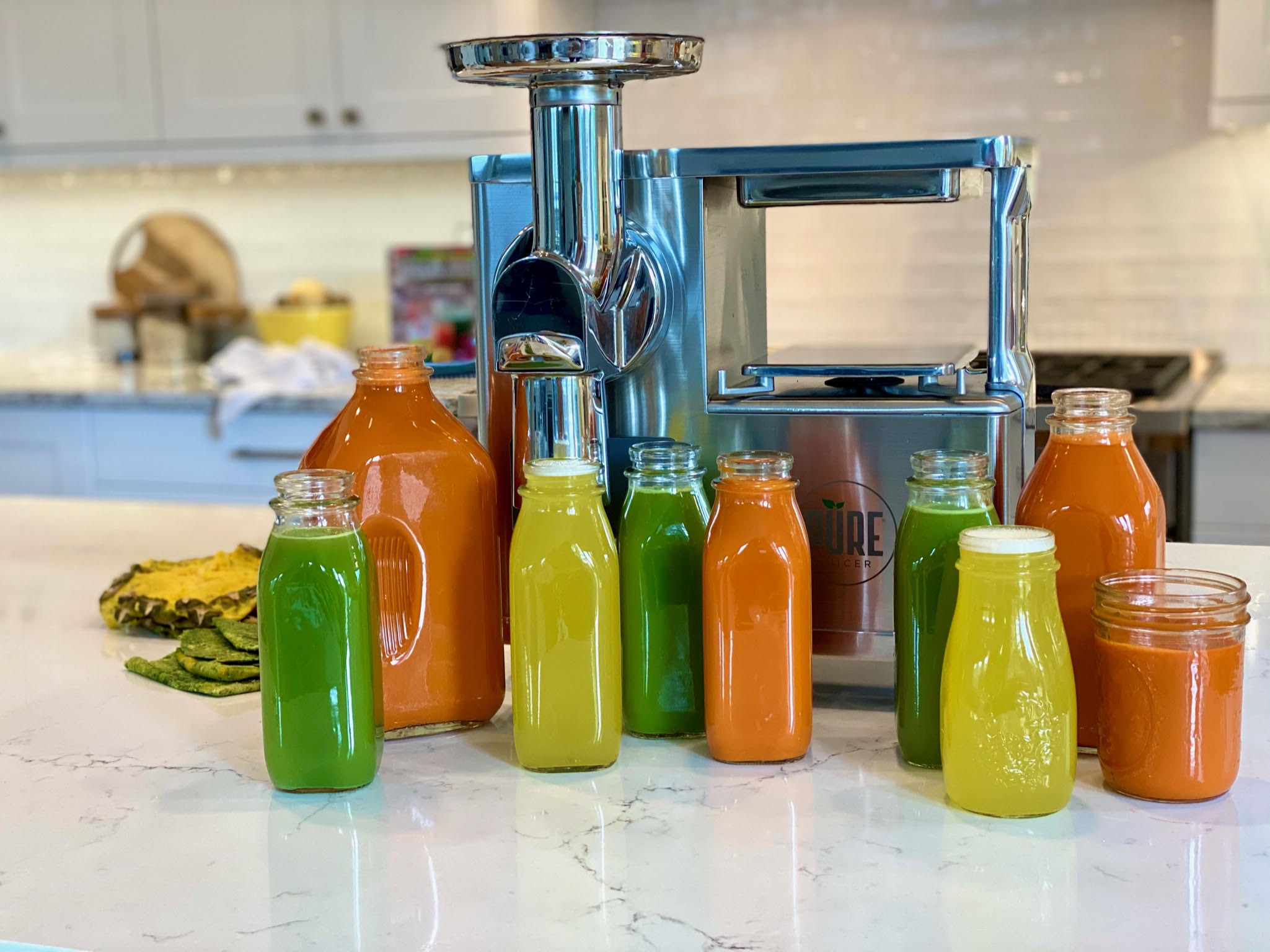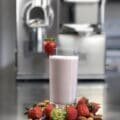In response to this piece about juicing on Today.com, we reached out to Dr. Gillian Ehrlich, who brings to the table a medical perspective and a large dose of common sense. We appreciate her thoughtful response, and we hope you’ll read it and share a comment at the end.
– Jen, Chief Juicing Officer
Kudos to the writer of this article for explicitly qualifying that juicing is not right for everybody, at every time, at any dose- this is true!
Let’s unpack how to think, generally, about healthy therapies like juicing in the broader context of the state of our national health, fad diets, and define what a “detox” actually is. We’ll finish with the wider picture about oxalates.

How Do We Know When Too Much is Too Much?
A quick story: In the mid-90’s, I participated in a month-long sea kayaking course amongst the islands of southeast Alaska. It was an incredible adventure. Our coursework focused on exploration- both personal as well as environmental. During a tides and currents lesson one sunny afternoon, four of our pals decided to take the ‘water challenge’: drinking a gallon of water in one hour. Hydration is good, right? If some is good, more is better, right? After their 3rd quart in 45 minutes, each of them was spending less time finishing their final quart and more time vomiting water into the sand next to our beachy classroom. We laughed and laughed at them but it wasn’t until years later that I learned too much water can damage your kidneys, electrolyte balance, brain–and ultimately can be fatal.
While this article may have caused some readers to worry about their own juicing habits, we could replace the word “juice” with the word “water’” and offer a similarly misleading cautionary tale. And no one would ever tell you to stop drinking water.
The Solution: We Need to Listen to Our Bodies
The real health tragedy in our nation is that we are not encouraged to listen to our body’s signals, trained to interpret their meaning, or even allowed to follow their instructions.
We often are required to wake up before our sleep is done (aka detox and reset), eat a mandated lunch at noon despite when hunger cues arise (or don’t), and exercise at odd hours or not at all in unforgiving routines that can span years.
In the midst of this, we are running to the supermarket that has all of the foods all of the time, furthering our disconnection from any natural rhythms or sources for our foods. I would say this disconnection is at the root of our current health statistics: 50% of all adults have at least one chronic health condition as of 2012 and 25% of all adults have at least TWO chronic conditions.
Chronic conditions accounted for 86% of all healthcare expenditures prior to the COVID-19 pandemic. We are becoming more and more chronically ill as a population. We have to do something. When we read an article warning caution around juicing, it’s important to recognize that people are searching for change for very good reasons!
Fad Diets Fade for Good Reason
Herein, however, is the drive for a “fad diet.” Born out of curiosity, ego to look a certain way, or desperation to feel better, heal or live longer, fad diets have become their own epidemic. The term “fad” indicates something that everybody of a certain period tries for the moment and then fades, usually because it was never elemental to the human condition anyway. Hula hoops are a great example. Various types of bicycles. The problem with a fad is that it is never customized to the individual but marketed to the masses and your health will always be personal to you.
Certainly there are people who treat juicing like a fad, but the truth is that squeezing liquid out of fruits and vegetables is a practice as old as our species and these foods themselves.
On that same Alaskan trip, we would fill our Nalgene water bottles with huge juicy blueberries and huckleberries and shake them until these all exploded to drink the sweet mixed juice. Part of what makes us human is how we “process” our food through grinding, fermenting, and cooking to increase the availability of nutrients, for preservation, or for flavor.
Getting Nourishment from Fruits and Vegetables is Not a Fad
It’s elemental to separate the “fad” part from the healthy, stable, generally safe, and beneficial part of juicing. Juice can allow for a higher gradient of micronutrients to be absorbed which can be elemental with GI issues associated with malabsorption or provide the electrolyte supportive of conditions like dysautonomia (specifically POTS- Postural Orthostatic Tachycardia Syndrome) that we are seeing flare up in Long-COVID patients. What do we call a nutritional therapy when it can be effective and efficient for driving mental clarity and physical health?
Nourishment from fresh fruits and vegetables can never be “a fad.” It’s how we evolved to live on the planet.
Detox According to Traditional Medicine
“Detox” is another of these fad words that is unfortunately ever more relevant as our animal bodies encounter a burden of pollution the planet has never seen before. 80,000 novel chemicals have been released into the environment since World War II.
It behooves all of us to attend to our metabolic waste baskets to ensure we’re continually eliminating what we might be eating, drinking or inhaling (like the microplastics sampled from the pristine air over Yellowstone in August 2019.
Ayurveda, the 5,000 year old traditional medical system of India, has an entire branch (one of eight!) dedicated to detoxification and rejuvenation. It’s been recommended for millennia now to include attention to daily and seasonal elimination to prevent disease formation as well as treat some diseases after they have arisen. Ayurveda also recognizes that the DNA that you carry has been custom mixed just for you. There has never been a ‘you’ before and will never be a ‘you’ again. Your unique constitution deserves unique diet and lifestyle supports. No food or therapy is recommended for all people at all times. Juicing can be a natural and healthy part of a dietary program for most people.
Resources abound online to help you figure out if/ when and how juicing might be right for you and just about anybody can get started with daily juices. If you have a medical condition, please discuss juicing with your medical provider. If your medical provider isn’t nutrition-savvy (medical school has not historically taught much nutrition but that is changing!), consider seeing a nutritionist or dietitian, a practitioner trained in Functional Medicine (https://www.ifm.org/find-a-practitioner/), a Naturopath Doctor, or a medical practitioner trained in Ayurveda for Traditional Chinese Medicine.
A NOTE ABOUT OXALATES:
It is absolutely true that many fresh fruits and veggies contain oxalates, and short of stopping all fruits and vegetables in your diet, you’re never going to rid yourself of oxalates.
The problem with oxalates is mostly around kidney stone formation, which results from a complex collaboration between an individual’s metabolism, their diet (including how they cook/prepare their foods), hydration status, certain medications, and current weight. The conversation about oxalates would not be complete without talking about how the body produces its own oxalates and that the microbiome plays a considerable role in the total body burden of oxalates.
Antibiotics that interrupt established microbial communities and diminish gut diversity are known to contribute to calcium oxalate kidney stone formation. Pointing to juice as a risk factor for oxalate burden is too narrow a lens; the broader context of microbiotic diversity, antibiotic use, other food intake, etc, matters tremendously when we discuss the risks/benefits of a plant-based diet.
We should mention that some kidney stones form more in acidic urinary environments; many fresh fruits and vegetables are more alkaline and might actually counteract this total acidity in the body. This review noted ‘oxalate restriction is minimally effective and applies primarily to those with genetic mutations in the oxalate transporters. The same article quotes this article: Update on Nephrolithiasis Management which says “For prevention of calcium oxalate, cystine, and uric acid stones, urine should be alkalinized. 45,46 Western diets are characteristically high in acid-producing foods, such as grains, dairy products, legumes, and meat. Alkalinizing urine involves eating a diet high in fruits and vegetables, taking supplemental or prescription citrate, or drinking alkaline mineral waters.1”

Family Nurse Practitioner
Certified in Functional Medicine 2014
Certified in Ayurvedic Medicine 2001











